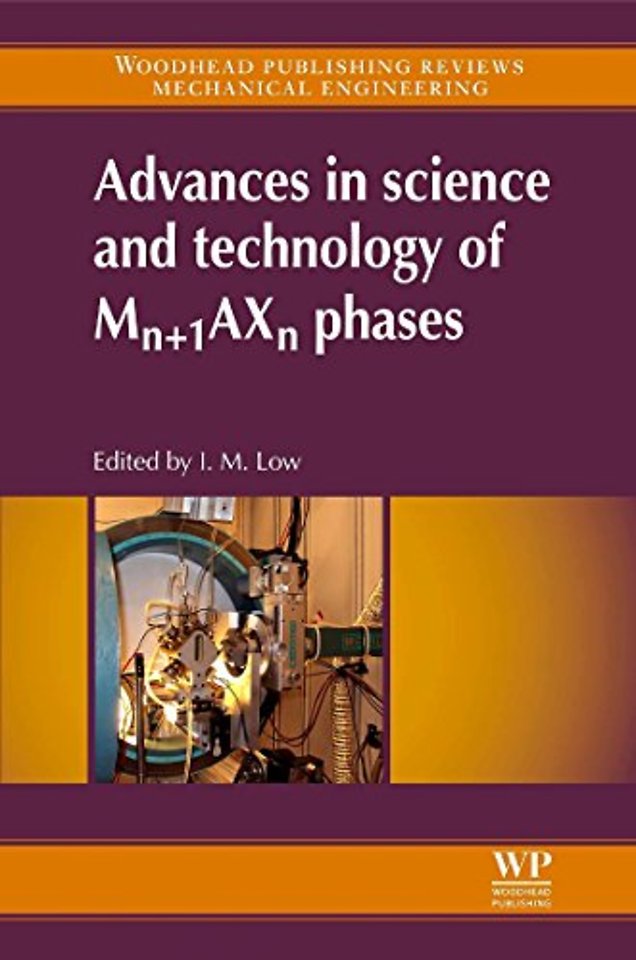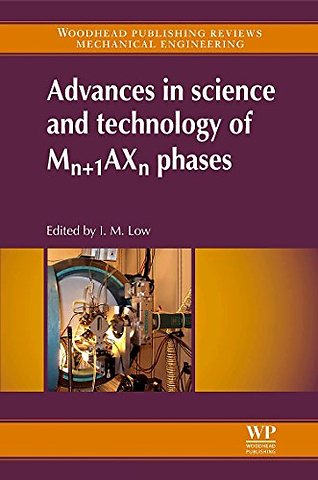<p>List of figures</p> <p>List of Tables</p> <p>Preface</p> <p>About the editor and contributors</p> <p>Chapter 1: Methods of MAX-phase synthesis and densification – I</p> <p>Abstract:</p> <p>1.1 Introduction</p> <p>1.2 Synthesis methods</p> <p>Chapter 2: Methods of MAX-phase synthesis and densification – II</p> <p>Abstract:</p> <p>2.1 Introduction</p> <p>2.2 Powder synthesis</p> <p>2.3 Synthesis of solids</p> <p>2.4 Synthesis of thin films</p> <p>2.5 Mechanisms of reaction synthesis for MAX phases</p> <p>2.6 Conclusions</p> <p>Chapter 3: Consolidation and synthesis of MAX phases by Spark Plasma Sintering (SPS): a review</p> <p>Abstract:</p> <p>3.1 Introduction</p> <p>3.2 Spark plasma sintering</p> <p>3.3 Spark plasma sintering of MAX phases</p> <p>3.4 MAX phase composites</p> <p>3.5 MAX phase solid solutions</p> <p>3.6 MAX phase coatings</p> <p>3.7 Conclusions</p> <p>Chapter 4: Microstructural examination during the formation of Ti3AlC2 from mixtures of Ti/Al/C and Ti/Al/TiC</p> <p>Abstract:</p> <p>4.1 Introduction</p> <p>4.2 Experimental procedure</p> <p>4.3 Effect of starting powder mixtures on formation of Ti3AlC2</p> <p>4.4 Reaction routes for powder mixture of 3Ti/Al/2C</p> <p>4.5 Reaction routes for powder mixture of Ti/Al/2TiC</p> <p>4.6 Summary</p> <p>Chapter 5: Fabrication of in situ Ti2AlN/TiAl composites and their mechanical, friction and wear properties</p> <p>Abstract:</p> <p>5.1 Introduction</p> <p>5.2 Fabrication of Ti2AlN/TiAl composites</p> <p>5.3 Mechanical properties of Ti2AlN/TiAl composites</p> <p>5.4 Friction and wear properties of Ti2AlN/TiAl composites at room temperature</p> <p>5.5 Friction and wear properties of Ti2AlN/TiAl composites at high temperature</p> <p>5.6 Conclusions</p> <p>Chapter 6: Use of MAX particles to improve the toughness of brittle ceramics</p> <p>Abstract:</p> <p>6.1 Introduction</p> <p>6.2 Experimental</p> <p>6.3 Results and discussion</p> <p>6.4 Conclusions</p> <p>Chapter 7: Electrical properties of MAX phases</p> <p>Abstract:</p> <p>7.1 Introduction</p> <p>7.2 Resistivity</p> <p>7.3 Conduction mechanisms</p> <p>7.4 Superconductivity</p> <p>7.5 Conclusions</p> <p>Acknowledgement</p> <p>Chapter 8: Theoretical study of physical properties and oxygen incorporation effect in nanolaminated ternary carbides 211-MAX phases</p> <p>Abstract:</p> <p>8.1 Introduction</p> <p>8.2 Crystal structure of MAX phases</p> <p>8.3 Steric effect on the M-site in MAX phases</p> <p>8.4 Bulk modulus of MAX phases</p> <p>8.5 Analysis of the electronic structure</p> <p>8.6 Elastic properties</p> <p>8.7 Effect of oxygen incorporation on the structural, elastic and electronic properties in Ti2SnC</p> <p>8.8 Conclusions</p> <p>Note</p> <p>Chapter 9: Computational modelling and ab initio calculations in MAX phases – I</p> <p>Abstract:</p> <p>9.1 Introduction</p> <p>9.2 Density functional theory</p> <p>9.3 The structural properties of Mn + 1AXn under pressure</p> <p>9.4 Ab initio study of electronic properties</p> <p>9.5 Ab initio study of mechanical properties</p> <p>9.6 Ab initio study of optical properties</p> <p>Chapter 10: Computational modeling and ab initio calculations in MAX phases – II</p> <p>Abstract:</p> <p>10.1 Computational modeling of MAX phases</p> <p>10.2 Electronic structures and properties of MAX phases</p> <p>10.3 Stabilities and occurrences of MAX phases</p> <p>10.4 Elasticity and other physical properties of MAX phases</p> <p>10.5 Effects of defects and impurities in MAX phases</p> <p>10.6 Summary</p> <p>Chapter 11: Self-healing of MAX phase ceramics for high temperature applications: evidence from Ti3AlC2</p> <p>Abstract:</p> <p>11.1 Introduction</p> <p>11.2 Evidence of crack healing</p> <p>11.3 Oxidation of crack surfaces</p> <p>11.4 Mechanical properties of healed Ti3AlC2 ceramics</p> <p>11.5 Crack healing mechanism</p> <p>11.6 Conclusions and future perspectives</p> <p>Acknowledgements</p> <p>Chapter 12: Oxidation characteristics of Ti3AlC2, Ti3SiC2 and Ti2AlC</p> <p>Abstract:</p> <p>12.1 Introduction</p> <p>12.2 Experimental procedures</p> <p>12.3 Results and discussion</p> <p>12.4 Conclusions</p> <p>Acknowledgements</p> <p>Chapter 13: Hydrothermal oxidation of Ti3SiC2</p> <p>Abstract:</p> <p>13.1 Introduction</p> <p>13.2 Hydrothermal oxidation of Ti3SiC2 powders</p> <p>13.3 Effect of Al dopant on the hydrothermal oxidation of Ti3SiC2 powders</p> <p>13.4 Hydrothermal oxidation of bulk Ti3SiC2</p> <p>13.5 Summary</p> <p>Chapter 14: Stability of Ti3SiC2 under charged particle irradiation</p> <p>Abstract:</p> <p>14.1 Introduction</p> <p>14.2 Effect of ion irradiation in carbides</p> <p>14.3 Lattice parameter and microstrains</p> <p>14.4 Disorder and amorphisation</p> <p>14.5 Phase transformations</p> <p>14.6 Damage tolerance</p> <p>14.7 Defect annealing</p> <p>14.8 Conclusions</p> <p>Acknowledgements</p> <p>Chapter 15: Phase and thermal stability in Ti3SiC2 and Ti3SiC2/TiC/TiSi2 systems</p> <p>Abstract:</p> <p>15.1 Introduction</p> <p>15.2 Experimental methods</p> <p>15.3 Results and discussion</p> <p>15.4 Conclusions</p> <p>Acknowledgements</p> <p>Index</p>

